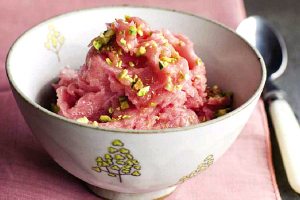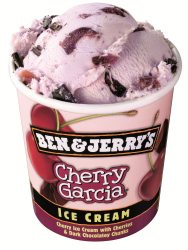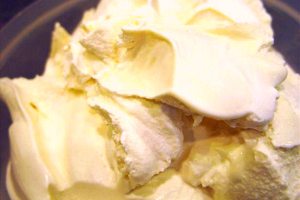Britain is Europe’s third biggest consumer of ice cream, at around 8 litres per person.
Rain or shine, ice cream has definitely maintained its standing as one of Britain’s favourite sweet delights. Quintessential Britishness is represented by the plinky-plonky jingle of the ice cream van.
Adults of all ages seem to revert to over-excitable children at the mere prospect of a classic 99 ice cream with a Flake. But how much do we actually know about its origins? DESIblitz takes a look into the history of this treat.
Many nations claim to have invented ice cream, so its exact origins are unknown. Ice cream type treats were first enjoyed by Roman emperor Nero, who used to order ice from the mountains to combine with fruit toppings.

As early as the 10th century, ice cream was prevalent among many of the Arab world’s major cities, including Baghdad, Damascus, and Cairo.
It was produced from milk or cream, often with some yoghurt, and it was flavoured with rosewater, dried fruits and nuts. It is believed that the recipe was based on older Ancient Arabian recipes, which were, it is presumed, the first and precursors to Persian faloodeh.
The early methods of freezing food was achieved by mixing ice and salt – this reduces the freezing point, making it easy to achieve temperatures lower than -14 degrees Centigrade. It was first recorded in India in the 4th century where the first technical description of ice making using salts was by Ibn Abu Usaybi, an Arab medical historian.

It was considered such a rare and exotic delicacy that only the selected guests sat at King Charles II’s table were treated to one plate of white strawberries and one plate of iced cream. All the other attendees were left to sit and watch the royal table enjoying this treat.
This led to such an intrigue in this dish that wealthy people had specially built ice houses erected on their estates. However, the ice was of such poor quality that it was only ever used to chill and freeze food and drink.
It wasn’t until 1843 that the invention of an ice cream machine simplified manufacture and production of ice cream in England. Ice was imported to London from Norway, America and Canada and this enabled ice cream to be made readily available to the British public.

We as a nation are becoming more daring with our taste buds. But if those wacky and wonderful flavours aren’t enough to tempt you, then research carried out by various ice cream manufacturers has shown that chocolate and vanilla are the nations favourite flavours.
Amongst the most popular brands of ice creams available are Häagan-Daz and Ben & Jerry’s. In 1961, Reuben Mattus developed the world’s ‘first super-premium ice cream’, Häagan-Daz.
Coffee, chocolate and vanilla flavours were sold in gourmet New York City shops, with the first European Häagan-Daz shops opening in 1987 in Germany and the UK. Häagan-Daz prides itself on offering a unique, truly exceptional eating experience that goes beyond great taste.

Founded in 1966 by Ben Cohen and Jerry Greenfield and renowned for their use of chunky nuts, chocolate and fruit, they only opted to include these chunks in as Ben had no sense of taste – he relied on what he called ‘mouth feel’, so big chunks of fruit, nuts and chocolate became their signature.
Ice cream making isn’t solely confined to the professionals nowadays, however – more and more people are owning their own ice cream makers and opting to make their own ice cream. Nicola from Birmingham, says:
‘’I’ve had my ice cream maker for a couple of years now and it’s so handy. It was a bit tricky to use at first, but now I’ve gotten the hang of it, it’s amazing how many different flavours you can make yourself.
“My family and I love ice cream at any time of year so it’s great that you can make it whenever you want. We still love pre-made ice cream though – I could eat any kind! There’s just so many flavours so there’s such a variety that it never gets boring. It’s the one thing I’d take to a desert island with me.’”
But even if you don’t have an ice cream maker handy, you can still have a go at making ice cream the traditional way:
Homemade Vanilla Ice Cream

- 4 eggs, yolks only
- 100g golden caster sugar
- 1 tsp cornflour (optional)
- 300ml double cream
- 300ml full-fat milk
- 1 vanilla pod
Method
- Separate out the eggs, putting yolks into a bowl.
- Add the sugar and whisk until pale and thick.
- Add the cornflour and whisk well.
- Put cream and milk into a medium saucepan.
- Scrape out the seeds from vanilla pod using a knife, and add to the cream and milk.
- Warm the cream and milk on a medium flame until just below boiling.
- Gently pour the hot contents into the bowl of eggs and sugar, whisking continuously to make a custard
- Sieve the custard to remove bits into a new pan. Heat over a very low flame and stir continuously with a wooden spoon, until it starts to thicken. This will take up to 10 minutes.
- Pour the ready custard into a freezer-proof container. Cool to room temperature and then chill in the fridge overnight.
- Then place custard into a freezer. You will need to take out once every hour (for 3 hours) and whisk with an electric hand whisk to keep smooth.
- Finally leave in the freezer until solid.
Britain is Europe’s third biggest consumer of ice cream, at around 8 litres per person. And it’s no surprise that it’s so loved. So get yourself to the nearest ice cream van and treat yourself to a double 99 with all the trimmings.





























































